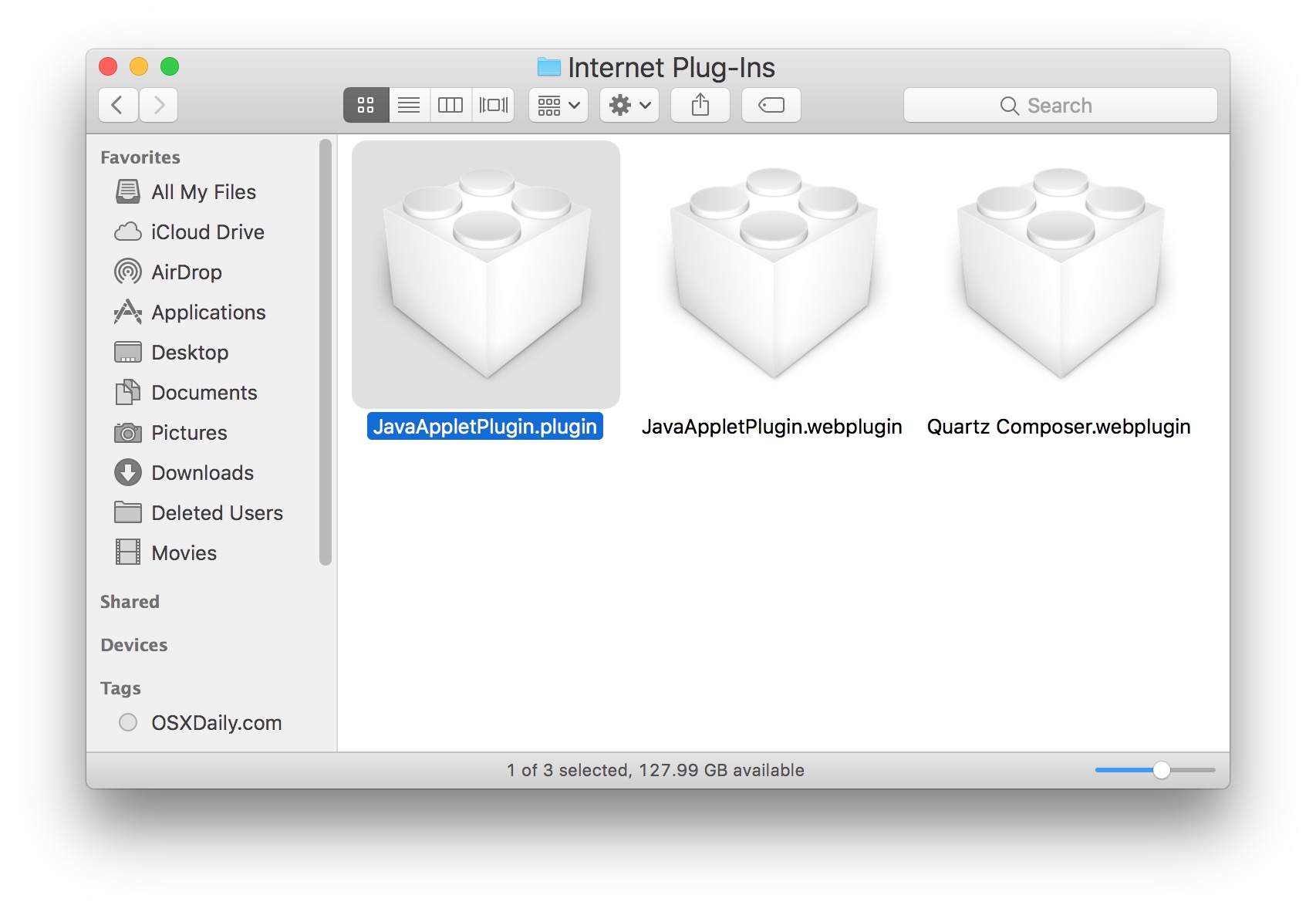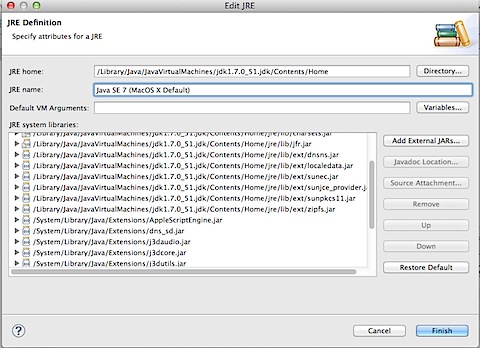On this page:
The latest news directly from EBS Development since 2006.
Search keywords: java plugin download, java download for windows 7 8 10 Java is the general term used to denote the software and its components, which include ‘Java Runtime Environment’ (JRE), ‘Java Virtual Machine’ (JVM) and also ‘Plug-in’. The full version string for this update release is 1.7.040-b43 (where 'b' means 'build'). The version number is 7u40. See Deploying Java Applets With Family JRE Versions in Java Plug-in for Internet Explorer. JRE Expiration Date. Manually download JRE 7u40 for Mac OS X from java.com or OTN and install it. Area: client/plugin. Java 1.7.021 download. Java Plug-in technology, included as part of the Java 2 Runtime Environment, Standard Edition (JRE), establishes a connection between popular browsers and the Java platform. Java allows applications to be downloaded over a network and run within a guarded sandbox. Download or update your existing Java Runtime Environment (JRE, Java Runtime), also known as the Java plug-in (plugin), Java Virtual Machine (JVM, VM, and Java VM). Download Java for Windows Offline Installation Recommended Version 8 Update 271 (filesize: 69.53 MB).
Important information about installing the Java plug-in
|
Windows
NOTE: Users should consult with their local IT support provider before installing or upgrading Java. Local applications may require specific Java versions.
Step One: Install or upgrade Java
Step Two: Verify that java is enabled in your web browser
- After installing or upgrading Java, completely quit, then relaunch the web browser.
- Clear the browser cache.
Mac OS 10.7 and higher
NOTE: Users should consult with their local IT support provider before installing or upgrading Java. Local applications may require specific Java versions.
Step One: Upgrade your java version
Step Two: Verify that java is enabled in your web browser
- After installing or upgrading Java, completely quit, then relaunch the web browser.
- Clear the browser cache.
- On Macintosh Google Chrome is incompatible with most Java web applications and web pages that use a Java applet, due to the fact that the Java plugin is 64-bit and Google Chrome is 32-bit.
Mac OS 10.6
NOTE: Users should consult with their local IT support provider before installing or upgrading Java. Local applications may require specific Java versions.
Awareness: Java 6 is no longer receiving security updates from Apple.
- If you are unable to upgrade your operating system and have applications that require Java, Java 6 is packaged with the Macintosh operating system. Java 7 is available only for Mac OS 10.7 and higher.
- Use Apple's Software Update to upgrade to Java 6 update 45.
- Apple has not released security fixes for Java 6 update 45 and known security issues exist.
- Apple's recommendation is to upgrade your operating system, then install Java 7.
Verify that java is enabled in your web browser
- After installing or upgrading Java, completely quit, then relaunch the web browser.
- Clear the browser cache.
Java Plugin 1.7.0_21 Download
Linux
Step One: Install or upgrade Java

Step Two: Verify that java is enabled in your web browser
Firefox
- Firefox 2.0 or later is supported
- If needed, enable java plugin for Firefox
- After installing or upgrading Java, quit then relaunch Firefox.
If needed, clear browser cache, clear Java cache
- Close all browser windows and quit or exit the browser. Then relaunch the browser and try again to access the site.
If you no longer need Java, uninstall it
- [Uninstall Java 6 on Macintosh]
Contact the Help Desk for assistance
See also
Last updated: October 14, 2020
- Watch the companion video: How to use Java in the new Microsoft Edge
Some users may need internet artifacts like the Java browser plugin to run legacy apps that require it. The options to run Java apps are few and far between these days. Yet it is possible to use Microsoft’s new Edge web browser — the Chromium-based version of Edge — to run Java apps. Assuming you have Java installed on your computer, the only requirement is an intermediary in the form of an extension.
Java Plugin 1.7 0_21 Free Download
What makes Java support possible in the new Chromium-based Microsoft Edge is Edge’s support of Chrome extensions. If you are still running the old version of Edge, it handles the need for running Java apps in a completely different way. Although Microsoft has its own extensions library, you won’t find what you are looking for there. Edge users with Java needs must visit the Chrome Web Store instead to install the one discussed here.
Java in the new Microsoft Edge using IE Tab
One method to use Java in the new Microsoft Edge is to install the IE Tab extension. The “IE” in IE Tab is an abbreviation for Internet Explorer. Available for Edge from the Chrome Web Store, IE Tab emulates Internet Explorer within an Edge browser window. The extension uses the Internet Explorer rendering engine to display Java content (as well as ActiveX and Silverlight content). It is easy to install, and even easier to use. It is important to note that IE Tab works on Windows machines only.
Visit the IE Tab page in the Chrome Web Store. Click the blue Add To Chrome button. A dialog will display asking you if you want to Add IE Tab, accompanied by a list of functions it can perform. Click the Add extension button.
Once installed, the IE Tab icon in Microsoft Edge displays next to Edge’s address bar. Click the icon to open an IE Tab. In the IE Tab, input the web address of a page that contains Java content. In the example below, our Java version verification was successful. The page uses a Java detection applet, with the latest version of Microsoft Edge using an IE Tab.
Try that same verification process in a regular Edge tab, and a notification that, “We are unable to verify if Java is currently installed and enabled in your browser,” displays instead.
Java Web Start, No Browser Required
If you have the Java plugin on your Windows machine, then you have Java Web Start (JWS). The question is does the Java application you want to run use JWS technology? JWS launches automatically if you download a Java app that uses it (usually in the form of a .jnlp file). Check the Java app developer’s website to see if they have a JWS download link for their app. If they do, download it and save a shortcut on your desktop when prompted by JWS. Double-click the shortcut to run the app.

Also included with JWS is a Java Cache Viewer. Use Cache Viewer to launch applications you have already downloaded. Here’s how:
1. Launch the Java Control Panel (Control Panel > Programs > Java icon). Double-click the Java icon.
2. Under the General tab, click the View button in the Temporary Internet Files section to launch the Java Cache Viewer in a separate window.
3. Double-click an application listed in the Java Cache Viewer to launch it without needing a web browser.
If the Java app you want to use is not listed or does not launch when double-clicked, contact the app’s developer.
Thank you for visiting Tech Help Knowledgebase to learn how to use Java in the new Microsoft Edge.
Henry Irvine, Contributing Technology Writer, translates more than a decade of internet technology experience in product and customer relationship management into practical help and how-to content. Look for him on Bay Area trails, music venues, or sausage shacks when he’s not writing. Don’t call him Hank if you see him. Seriously. Hank on Twitter